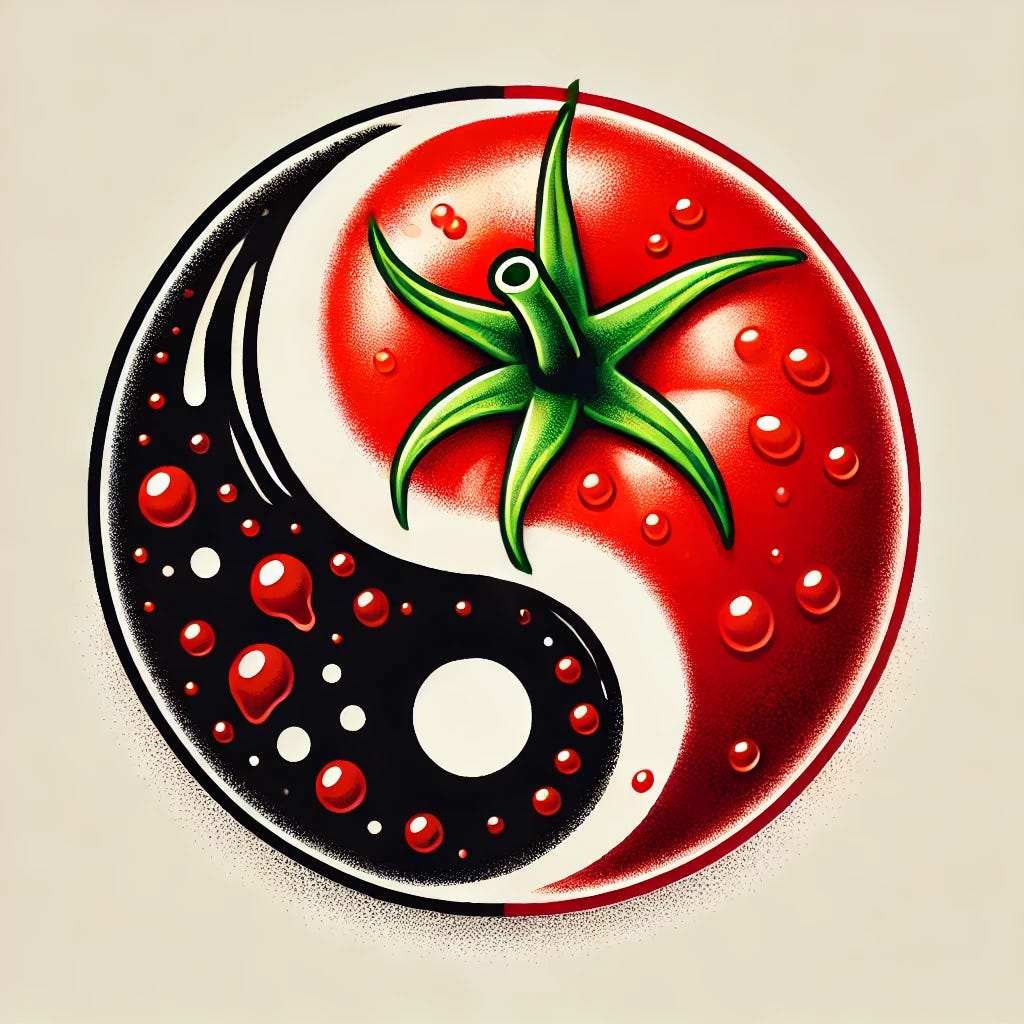
How you define your values is obviously up to you, but I want to share a distinction I found helpful.
Long ago I wrote an article on “radical acceptance” which I defined as, “acceptance that embracing resistance.” It’s radical, as in very very very very extreme, but it’s a particular kind of extreme—it’s extreme because it acknowledges and embraces its opposite.
10 years later, I’m working on a book chapter on the proper use of company values, and I find myself returning to this definition of radical once again. It’s a good way to describe why I feel so many “values-driven” efforts fail to reach their potential.
For example, if a company says it has a shared value of, “balance” which means something like, “a state of equilibrium, and we strive to avoid extremes,” I would call that a regular value. It’s regular because it values itself.
The radical version of balance includes its regular definition, but also transcends that definition to embrace its opposite. So, “radical balance,” actually embraces imbalance. True balance means we aren’t attached to one side or the other, even when one of those sides is balance itself. The deepest, most genuine expression of balance isn’t artificially pursued or mandated.
In fact, in their purest forms, all values are this way. Here are some other examples:
Radical Justice: Fair behavior or treatment…that also acknowledges and embraces a diversity of circumstances and needs that might require unique or custom treatment.
Radical Truth: In accordance with fact or reality…that also acknowledges and embraces the fact that illusions exist (i.e. the content of an illusion isn’t real, but the illusion itself, as a thing that appears, is real).
Radical Transparency: Showing or being easily seen through…that also acknowledges and embraces occasions in which it cannot or won’t be seen through (i.e. transparently saying, “I will not show you X”).
Radical Care: Feeling deep concern or interest…that also acknowledges and embraces that in order to provide care, sometimes you need some healthy emotional distance (Instead of empathy, I call this “expathy”).
Radical Safety: The condition of being protected or unlikely to be harmed…that also acknowledges and embraces the fact that some risks must be taken in order to remain safe (i.e. “A ship is safe in the harbor, but that’s not what ships are for” - John Shedd).
Going through values this way is a worthy exercise. You don’t need to throw away your existing values, just understand there is more to their story.
Now, the idea of something “embracing its own opposite” isn’t new. In fact, it’s elegantly represented in the classic Yin-Yang, which shows two smaller circles of opposing colors living inside their opposites. It’s not just about overall balance of a thing, it’s also about each piece embracing their opposites.
So, you can define and operationalize values however makes sense to you. Use your best judgment. But for me, regular values are intelligent—radical values are wise.



